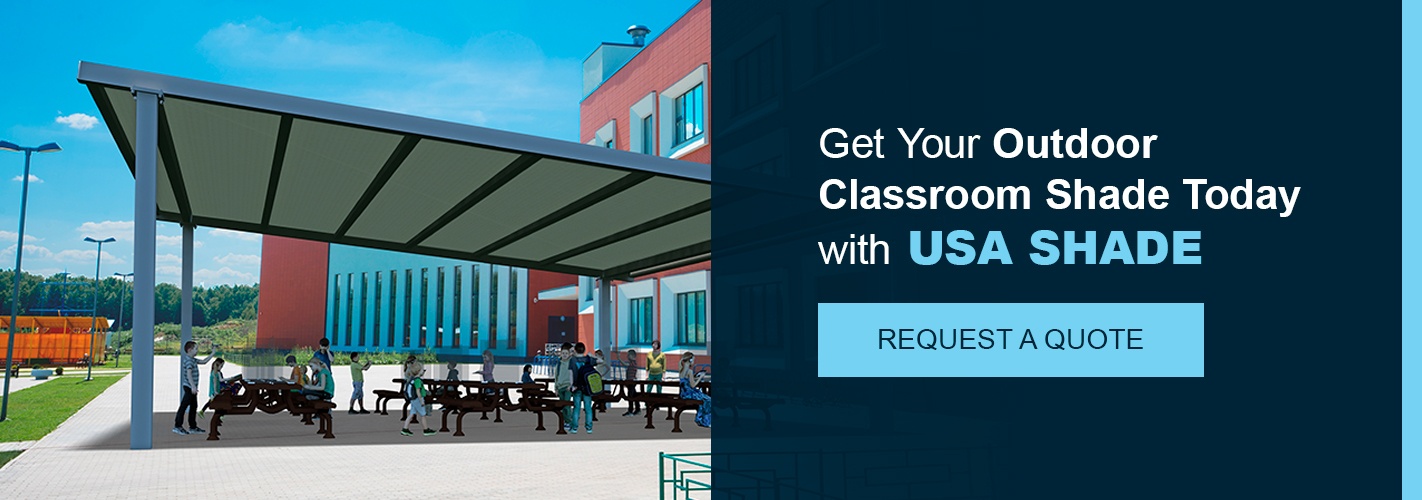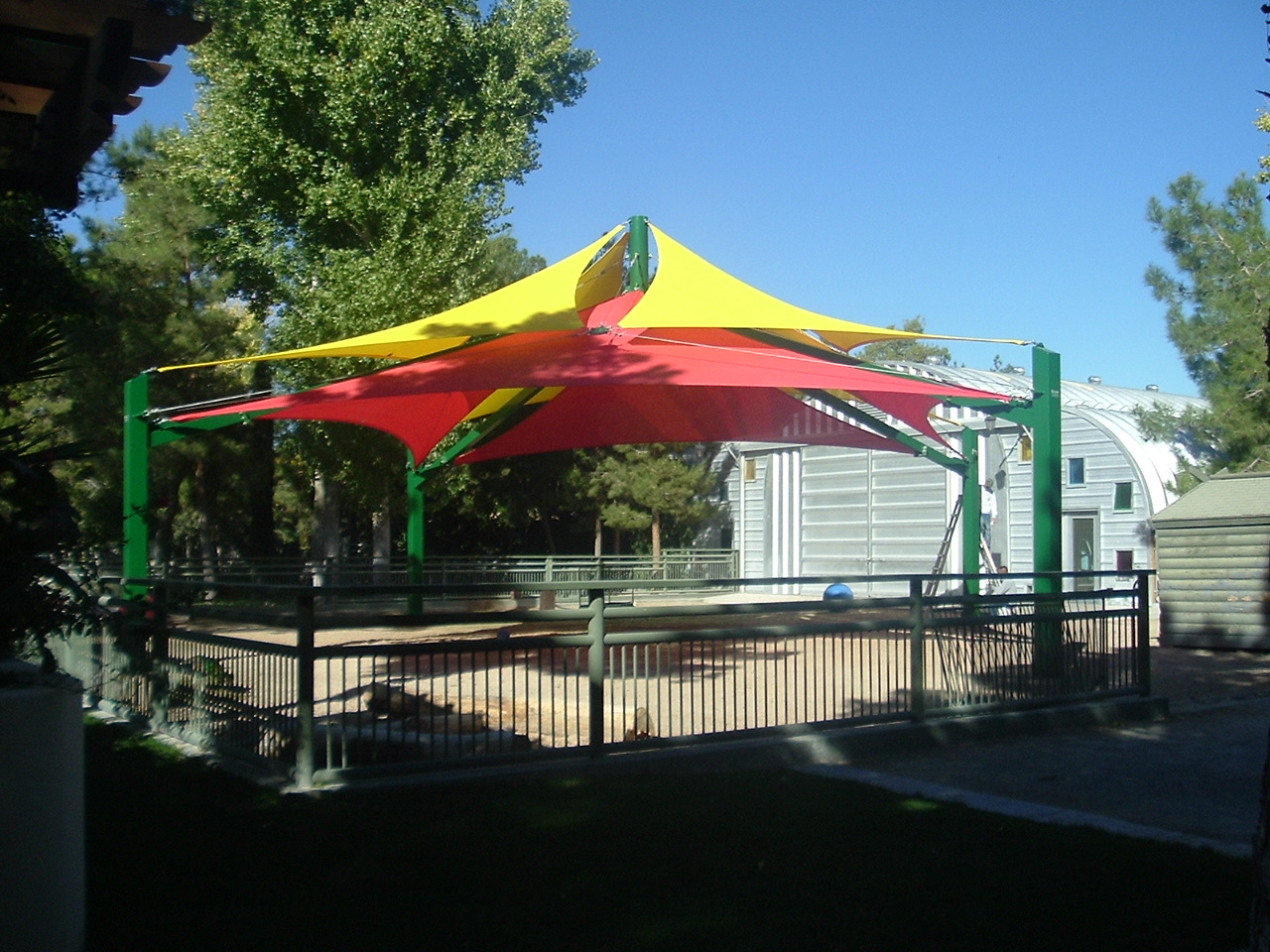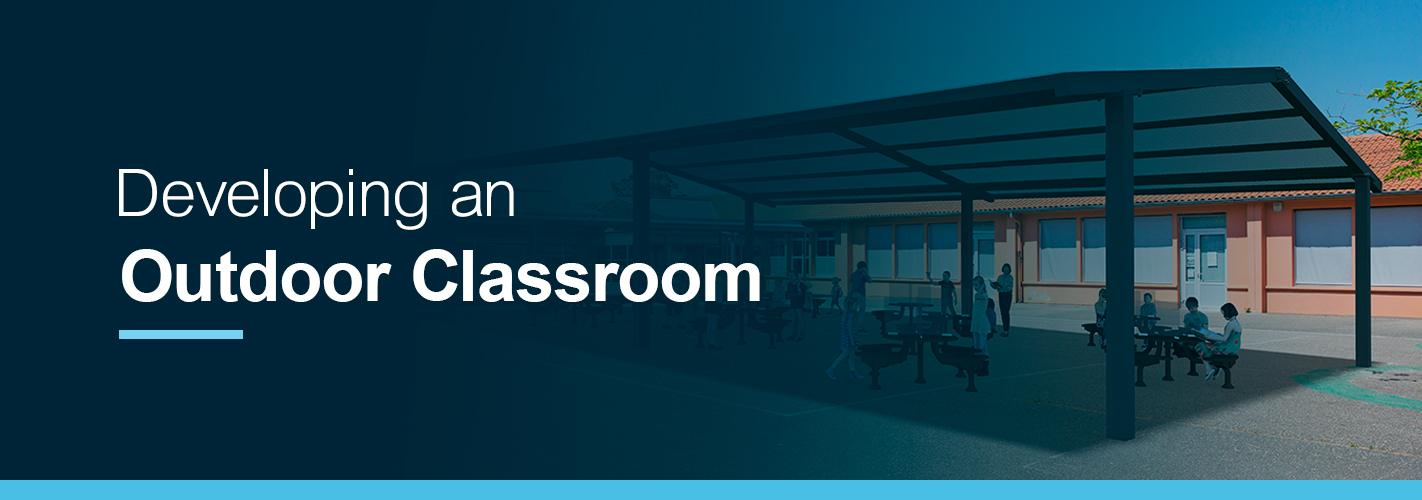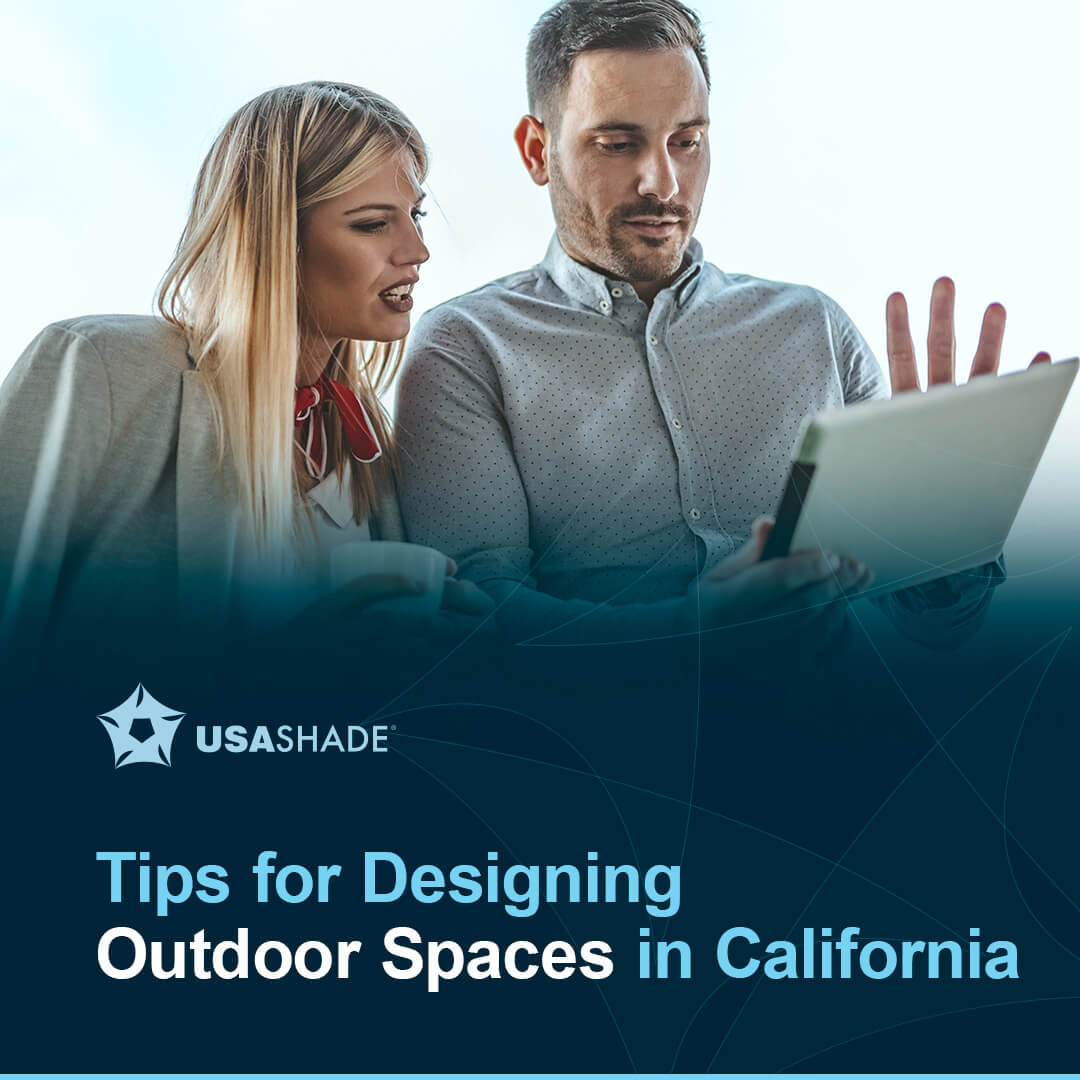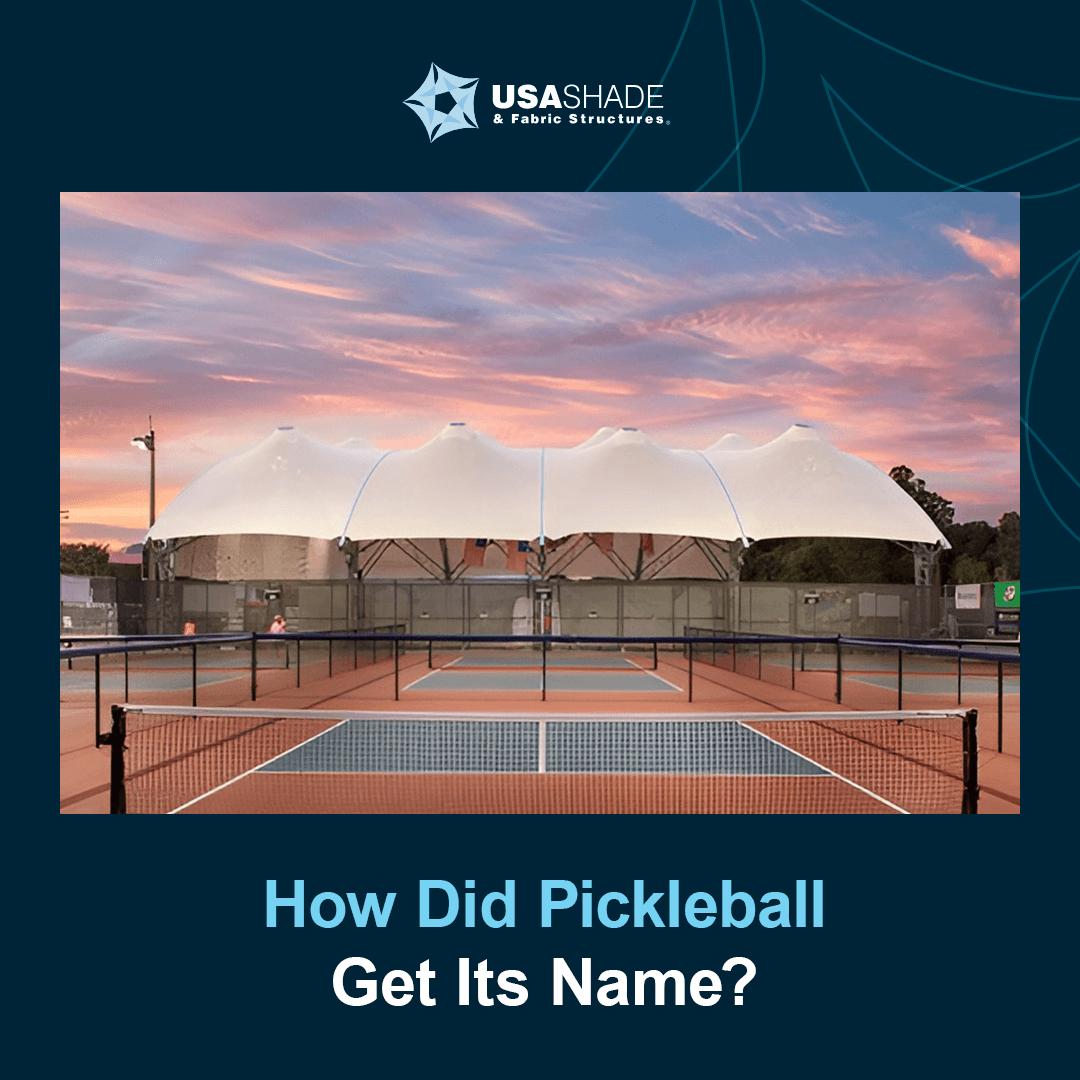When thinking of the word “classroom,” most people would likely picture the same thing — a grid of desks spread out across a square or rectangular room, a whiteboard or blackboard on the front wall, and windows. This arrangement is the traditional setting for learning and one that generations of children have experienced.
Even so, new research about how to enhance learning is continually coming to light. Prioritizing time outdoors has significant cognitive and well-being benefits for people of all ages. With this in mind, the traditional classroom setup is evolving, and more schools are welcoming the idea of an outdoor classroom.
Discover the numerous benefits of learning in nature and gain valuable tips to optimize your outdoor classroom design. Read the full article or jump to a specific section:
- 7 Benefits of Outdoor Classrooms
- Outdoor Classroom Ideas by Subject Area
- 10 Tips for an Effective Outdoor Classroom Design
- Get Your Outdoor Classroom Shade Today
7 Benefits of Outdoor Classrooms
Outdoor classrooms are learning spaces at schools where teachers can conduct lessons outside. The lesson might take the same format as it would indoors, just in a different environment. As the average child spends about five to seven hours using technology daily, outdoor classrooms for schools help mitigate the effects of too much screen time. They also help offset the impact of “nature-deficit disorder,” a term used to describe conditions brought on by a lack of interaction with nature, primarily among children.
The benefits of teaching outdoors are plentiful, especially when put in the context of a learning environment. Here are seven of the most notable benefits that outdoor classroom spaces offer:
1. Improved Health
Spending time outside produces multiple health benefits. For example, an appropriate amount of sunlight can lead to higher levels of vitamin D. This essential vitamin benefits the body in two main ways: bone development and immune support. People can boost their vitamin D levels by consuming certain foods, but it is vital to spend some time outside to reach optimal levels.
Time outdoors also helps reduce the risk of childhood obesity. Transitioning the learning experience to an outdoor classroom allows children to move more, exert energy and burn calories. These activities make it easier for kids to maintain a healthy weight in comparison to remaining sedentary for long periods.
Additional health benefits of spending time outdoors include decreased blood pressure, improved eyesight, reduced osteoporosis and increased immunity.
2. Increased Focus
Every teacher has experienced the challenge of keeping students engaged. Restlessness and short attention spans of children are common factors that prevent learning success. However, these qualities increase when children are confined to indoor spaces and sitting for a long time.
Outdoor classrooms for schools allow kids more opportunities to walk around and interact with their surroundings. This satisfies children’s desire to move and helps them channel their energy, whereas being restricted to a desk can have the opposite effect. What seems like excessive rowdiness inside is no more than a healthy interaction with their environment when taken outside.
In addition, outdoor classrooms have a positive effect on children with ADD or ADHD. Studies have linked increased focus to green spaces, making it paramount that an outdoor classroom design features an abundance of grass, trees and other plants.
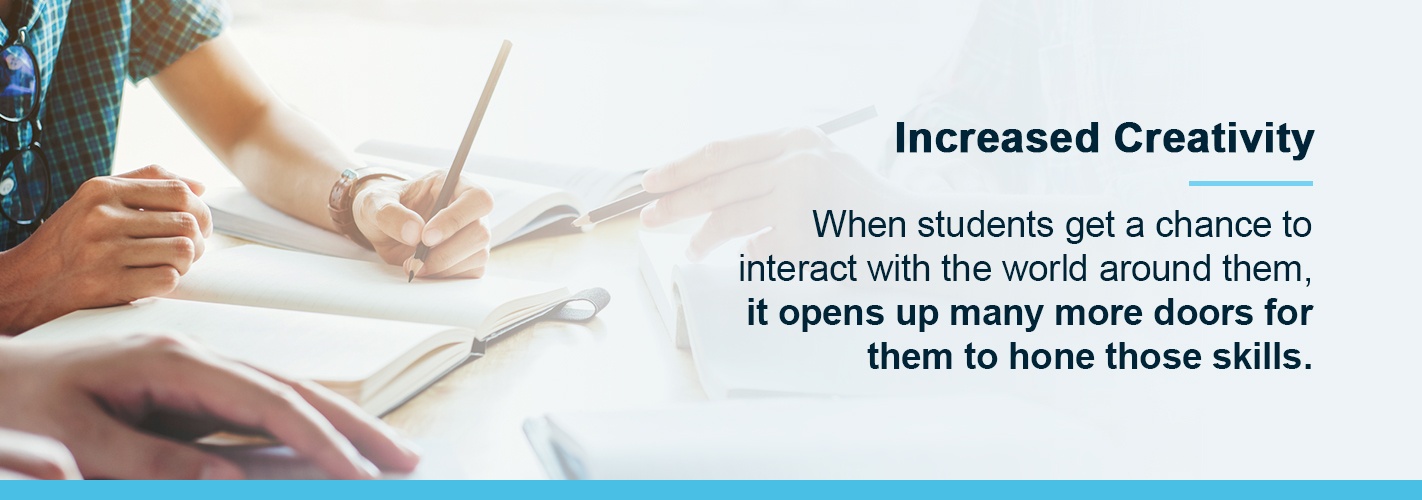

3. Increased Creativity
Pencils and paper are excellent tools for recording information, but this two-dimensional learning approach can limit children’s ideas. For example, it can be more challenging to develop high levels of creativity or problem-solving skills by just writing on a page.
Taking students outdoors changes that completely. When students get a chance to interact with the world around them, they have more opportunities to hone their creative skills through playing and movement. The natural environment also stimulates their curiosity and imagination, leading to more unique ideas and problem-solving abilities.
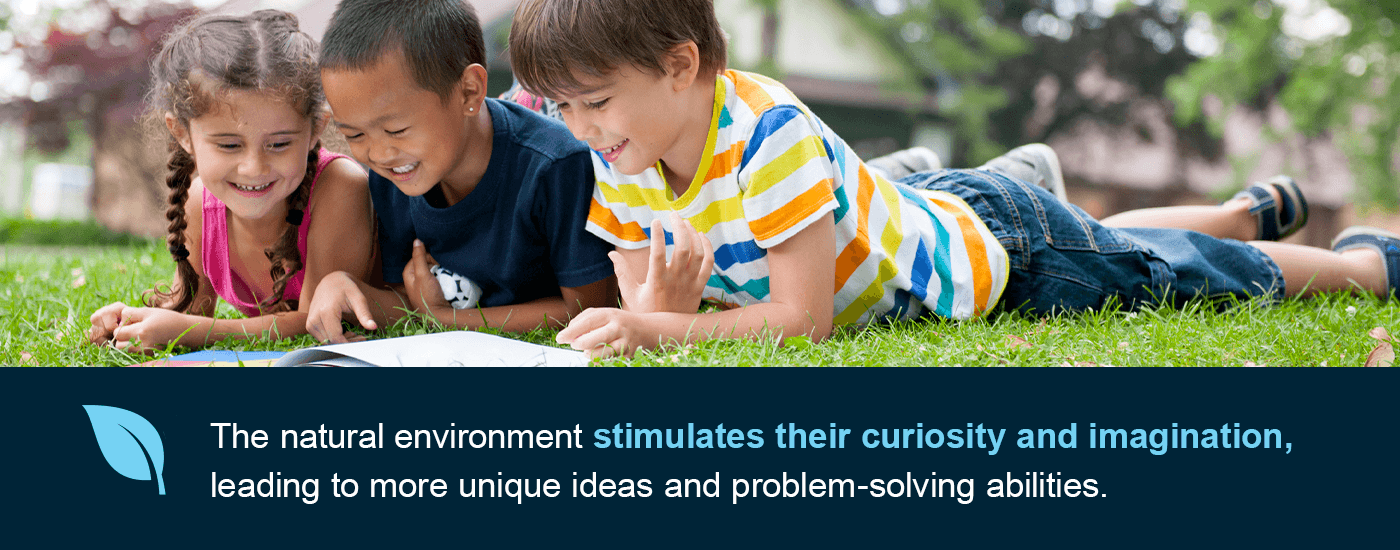

4. Better Sleep
Many students find sitting at a desk all day mentally taxing, and it rarely involves much physical movement. Learning in an outdoor classroom counteracts this issue. With increased chances of physical exertion, students can use up more energy and give their bodies greater incentive to fall asleep at night.
Outdoor classrooms also expose students to more natural light, helping to regulate their sleep-wake cycle. This helps children develop a healthy sleep routine so they can experience benefits like increased academic performance and improved mental and physical health.
5. Decreased Stress
Stress is something that people of all ages experience. While one of the best ways to handle this issue is to address the root cause, it doesn’t hurt to counteract it with other things, either.
Spending more time outdoors can help dial down stress levels, making students happier and more eager to learn. An outdoor classroom also allows for more access to sunlight, which boosts serotonin or the “happy hormone.” Increased serotonin levels help stabilize our mood, reduce stress and strengthen our emotional well-being.
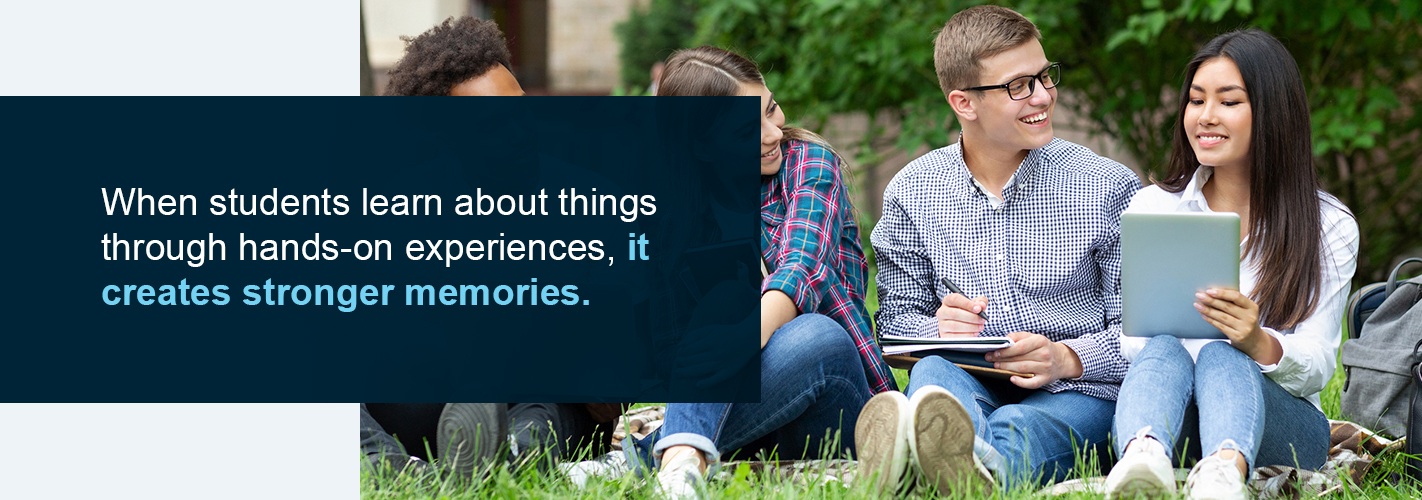

6. Improved Retention
When children are passively sitting at a desk, they may struggle to absorb and retain information. The risk here is wasting learning time as teachers have to repeat themselves or re-explain simple concepts frequently. Even the most attentive students might find themselves having trouble retaining the content after back-to-back lessons.
Being outdoors can negate this problem by taking advantage of simple psychology. When students learn about things through hands-on experiences, it creates stronger memories and forces them to apply what they learn to real, physical situations. This means that a 10-minute science lesson outdoors could replace a 30-minute one spent going over the same concept in a textbook.
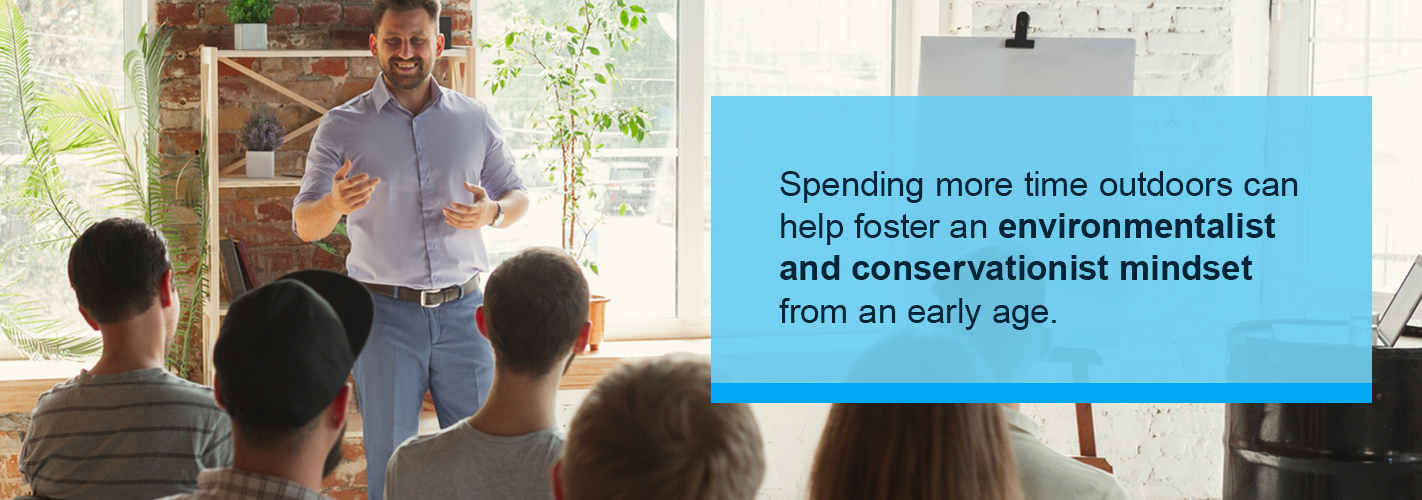

7. Greater Environmental Awareness
Spending more time outdoors can also help foster an environmentalist and conservationist mindset from an early age. When a child discovers the magic of a butterfly’s life cycle, the sounds of different birds and the countless shades of green that nature has to offer, they will be more inclined to conserve or protect the environment later in life.
As the old adage goes, the future of tomorrow is in the hands of the children. Fostering an appreciation of nature from an early age will help the next generation adopt a more eco-friendly mindset.
Outdoor Classroom Ideas by Subject Area
Once you’re confident that spending time in an outdoor classroom is beneficial, you may still wonder how to make it work. How should you approach outdoor teaching? What alterations should you make to your teaching methods?
In truth, you don’t necessarily have to change anything at all. You can produce most of these positive effects by setting up a portable whiteboard and instructing students to bring their textbooks outside.
However, if you still want to customize your outdoor classroom design to yield maximum learning outcomes, there are a handful of ways you can do so. Here are some ideas for spicing up different subjects in an outdoor classroom:
Science
Science is probably the best subject to apply to an outdoor environment, because so many scientific concepts directly involve nature. Whether you’re teaching about topics related to biology, climatology or physics, the outside world contains the materials needed to give students hands-on experience to solidify their learning.


An outdoor science class could be as simple as examining leaves on different trees, but you could also customize your outdoor classroom to allow for other types of lessons. For example, you could install bird boxes or plant a flowerbed, enabling students to examine the life cycle of different organisms.
Math
Compared to science, subjects like math may seem to offer fewer learning opportunities in an outdoor classroom. How will being around nature help children learn their multiplication tables?
Combining the hands-on element of outdoor learning with math helps cement mathematical concepts. Using simple objects found outside, such as rocks or plants, enables students to work through math problems in real life. This helps students to visualize math formulas and understand them better. Since hands-on learning also improves retention, students will be able to memorize concepts better, such as multiplication tables.
Social Studies
Geography and history focus on elements that exist in the world, and outdoor classrooms help bring more context to these subjects.
One way you can do this is to take advantage of sidewalk chalk. Find an open stretch of pavement and have your students draw maps on them. When teaching history, you can draw the maps in advance and then have students move across those maps to represent historical events.
English
Learning English outdoors is particularly helpful for young children. To help expand their vocabulary, you can attach labels to different items in the outdoor classroom, and simply let the students roam around the space to explore the words and objects in person.
Then, at the end, you can ask students to share some of the things they interacted with. This will engage students and encourage them to pay attention to the labels while they play and retain the information.
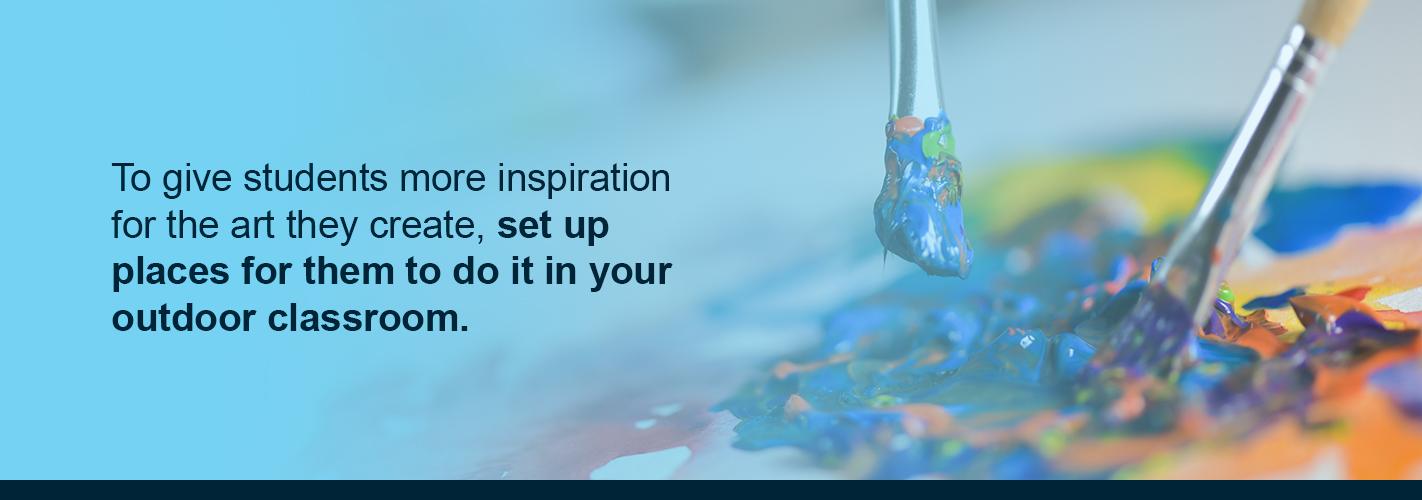

Art
Art often depicts elements of nature, so moving art classes outside offers endless creative opportunities. Students could gather natural materials, such as sticks, feathers and dried leaves, to create a new masterpiece. Shadow drawings, outdoor wall murals and collages are some ideas for outdoor art classes.
Music
Many schools still offer music programs as part of the curriculum. Of course, playing instruments indoors — especially when they’re put in the hands of young children — can be extremely distracting to nearby classes without proper sound-proofing in the room.
Taking music outside offers the benefit of reduced disruption to other classes. By putting percussive instruments in your outdoor classroom, you can provide another creative option for your students to take advantage of. For children who like to make a lot of noise, this will be a way for them to positively channel their musical expression and engagement.
10 Tips for an Effective Outdoor Classroom Design
An outdoor classroom is a tremendously effective learning environment if you use it the right way. Many of the benefits and methods discussed above rely on the notion that your school actually has space for an outdoor classroom available. Parking lots, black-top areas, and other recreational spaces can easily serve a multi-purpose space that can become an outdoor classroom.
An outdoor learning space is a worthy investment with many health and educational benefits, but how do you develop an outdoor classroom? Where do you start?
Outdoor classroom architecture can take whatever form you need it to and can be anything from a single tent to an elaborately designed arboretum. Use the knowledge of what you want and need to support students’ education as your guide. Here are some things to consider when planning an outdoor classroom design.
1. Seating
Even though students will likely spend most of their time outside moving around, outdoor classrooms still require seating. Similar to a traditional classroom, there will be plenty of times when students need to be sitting down and listening.
When designing outdoor classrooms, consider how to arrange your seats to allow all students to hear and see the teacher. Individual seats or a few rows of benches work well in an outdoor setting. Another option is amphitheater-style seating to ensure better acoustics.
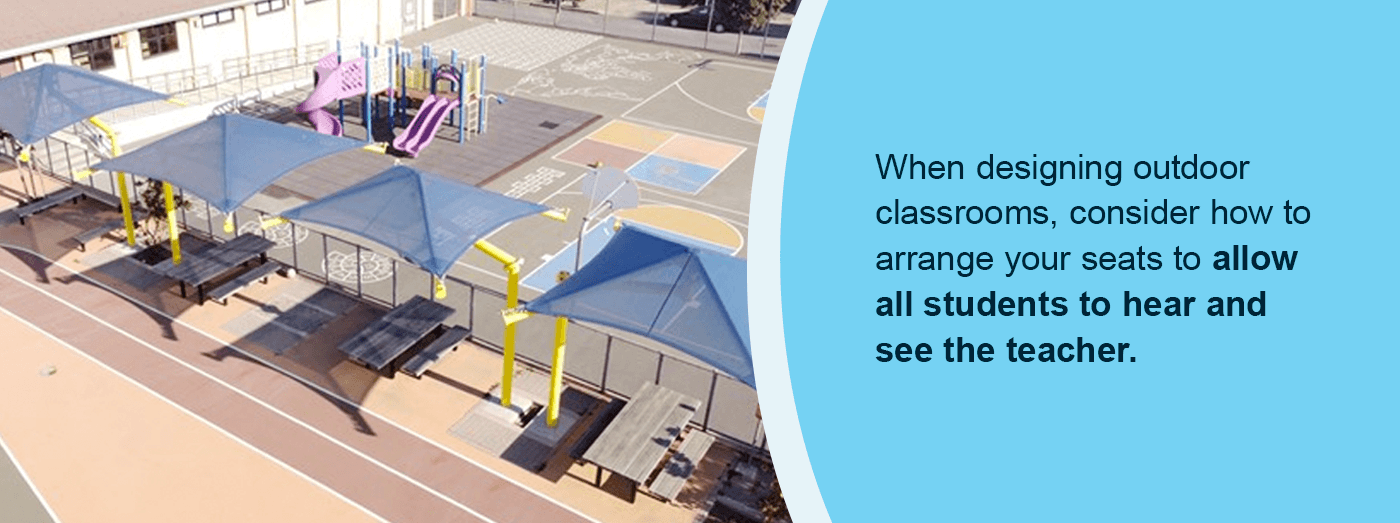

2. Tables
Textbooks and paper are still valuable in an outdoor classroom, and students will need to put these items on a table. After class, teachers can convert tabletops into outdoor eating areas for lunches and breaks. Choose tables made from recycled plastic or other durable materials that can withstand the elements.
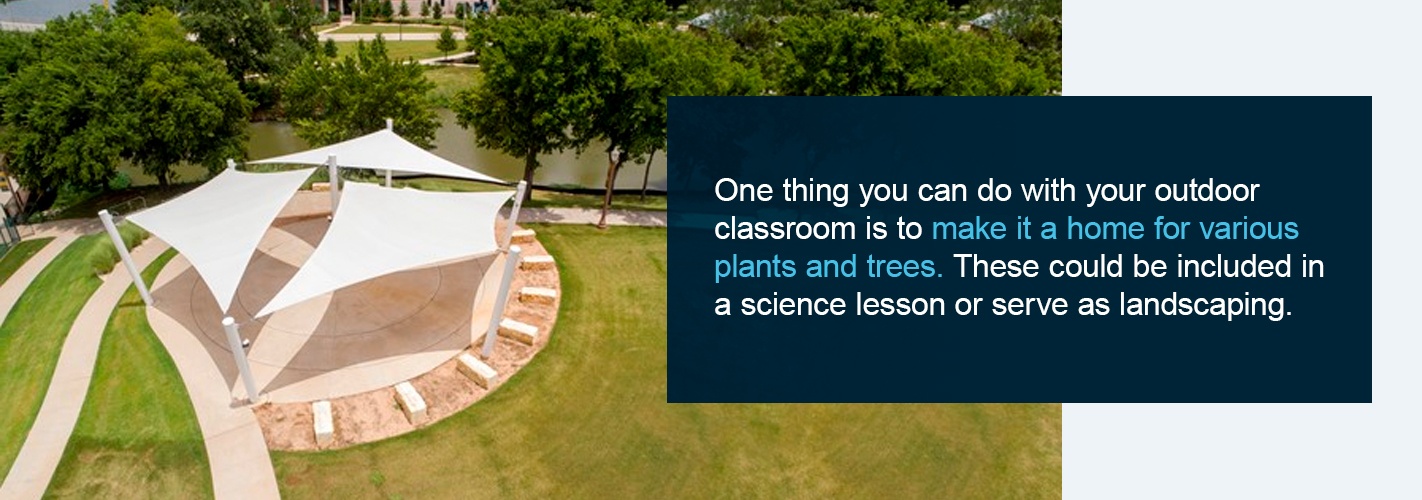

3. Plants
Many of the greatest benefits of being outdoors stem from the connection with nature. Recall that nature-deficit disorder can also occur in children living in heavily urban areas, even those who frequently go outdoors. Fresh air and sunlight are great, but plants and natural elements support the learning environment as well.
One thing you can do with your outdoor classroom is to make it a home for various plants and trees. These could be included in a science lesson, allowing students to discover what plants need to grow. It doesn’t have to be a forest or even a full garden, but having at least a handful of plants will optimize your outdoor classroom design.
4. Logs and Rocks
Plants aren’t the only natural elements you can include in your outdoor classroom. If the space is primarily for young children, you’ll want to add things that they can interact with freely. While they can observe the plants, logs and large rocks are more substantial landscaping elements they can touch to discover different textures.
Smaller stones scattered throughout the space also offer countless benefits, from stacking to counting to organizing. Logs can likewise serve as natural elements to interact with, functioning both as extra seats and as potential homes for insects and worms for science observations.
5. Water Sources
You can do numerous science experiments in a small pond or water fountain. Setting aside a space in your outdoor classroom for a pool of water, perhaps with a small fish population, can add a scientifically valuable and visually pleasing element to the area. Blue spaces like coastal and freshwater landscapes offer many rejuvenation benefits along with green spaces.
6. Facilities
Depending on how your school plans to use the outdoor classroom, you may want to include certain facilities within it.
Will students be there for long periods during the day? You might install a portable restroom close by or position the outdoor classroom within close access to an indoor restroom. Will they spend their time there doing a lot of activities that get their hands dirty? Consider installing an outdoor sink where they can wash off. Will any of them be required to use their school computers there? Think about boosting the school’s Wi-Fi signal so students can easily complete online activities even when they’re outside.
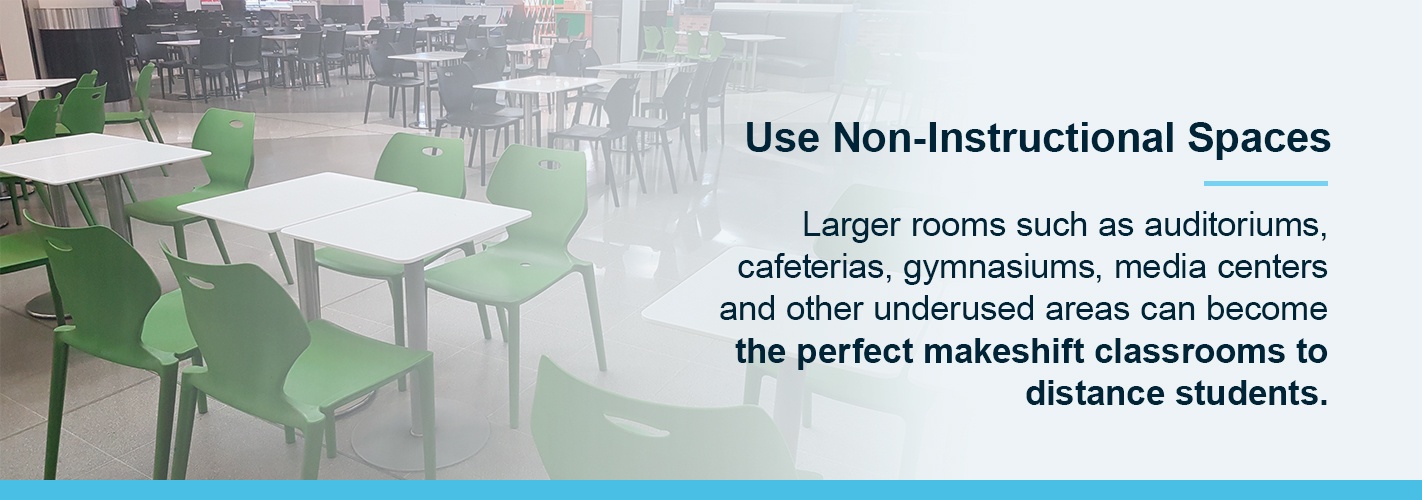

7. Compactable Ground
Outdoor classrooms don’t require traditional flooring, but it is important to think about the ground. Maximize usability by positioning your classroom on a surface that won’t become muddy after it rains.
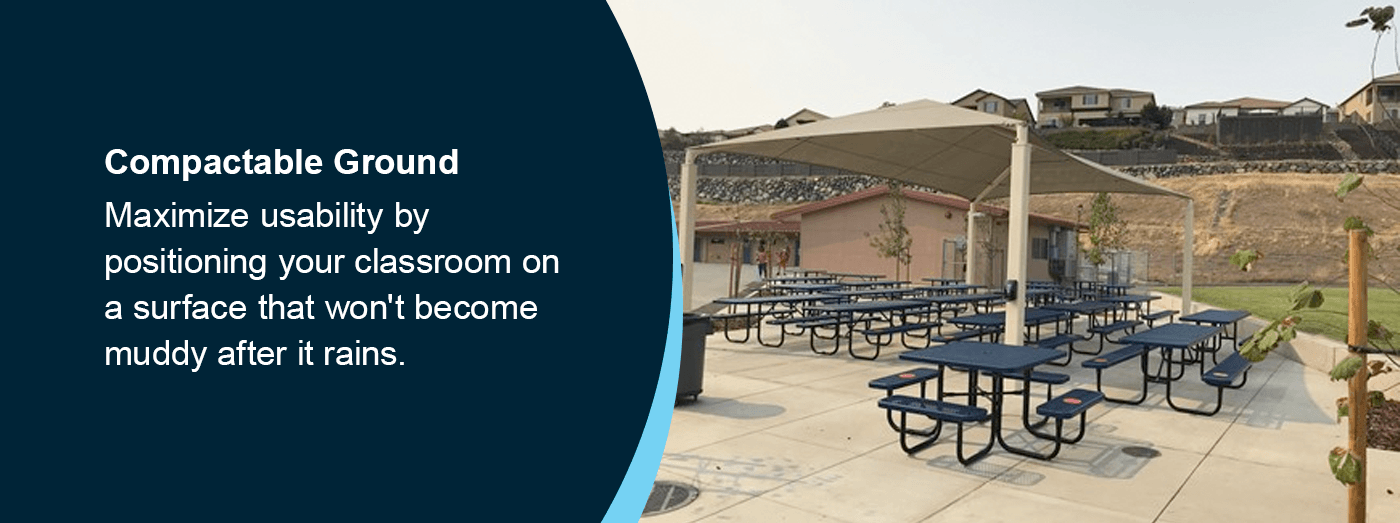

While you can still have patches of soil set aside for plants, consider covering the majority of the area in something like mulch. Mulch is a natural material that won’t get muddy in wet conditions. Other options are safety surfacing or concrete.
8. Pavement
For a natural environment, it might seem counterintuitive that your outdoor classroom could benefit from pavement or concrete. You won’t likely want to pave the whole area, but it can be useful to set aside a stretch of concrete that can be used for various learning activities.
Concrete will usually dry more quickly than mulch or dirt after it rains, and it will also provide a space for children to use sidewalk chalk. If you don’t want to add in a new section of pavement, you can simply construct your outdoor classroom on an existing area that is safe for students to use.
9. Wall or Fence
An outdoor classroom is a great space for allowing kids to exert some of their restless energy, but it’s important to set boundaries on that energy — literally. Erecting a wall or a fence around the classroom is an easy way of ensuring that students stay within the designated area and for their safety. This is easier if the school building already borders the classroom on one or more sides.
A barrier wall serves as a safety element and an additional learning source. For example, you could mount a whiteboard to the wall to enhance your outdoor classroom design. The wall can hold other items for educational opportunities, like birdboxes, planters and more.
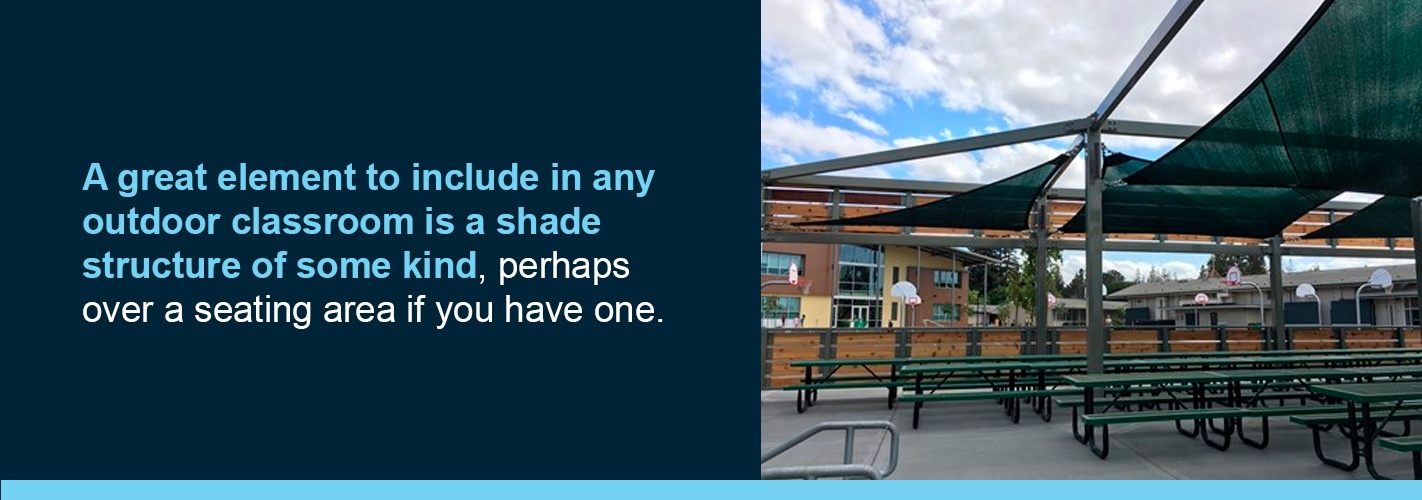

10. Shade
There are many advantages of outdoor learning and so many opportunities to maximize your outdoor space. One main difference in the indoor vs. outdoor classroom environment is the safety and protection from excessive UV exposure. Shade structures for outdoor spaces are a great design element that keeps students and teachers cool and protected.
Shade structures take many forms and are customizable for schools looking to add a unique architectural element to their campuses. These shade solutions use high-density polyethylene (HDPE) fabric block up to 97% UV rays and allow for airflow that can reduce temperatures up to 25 degrees Fahrenheit. With various fabric colors to choose from, schools can find shade structures for outdoor classrooms that enhance the surrounding natural environment or match the school’s colors.
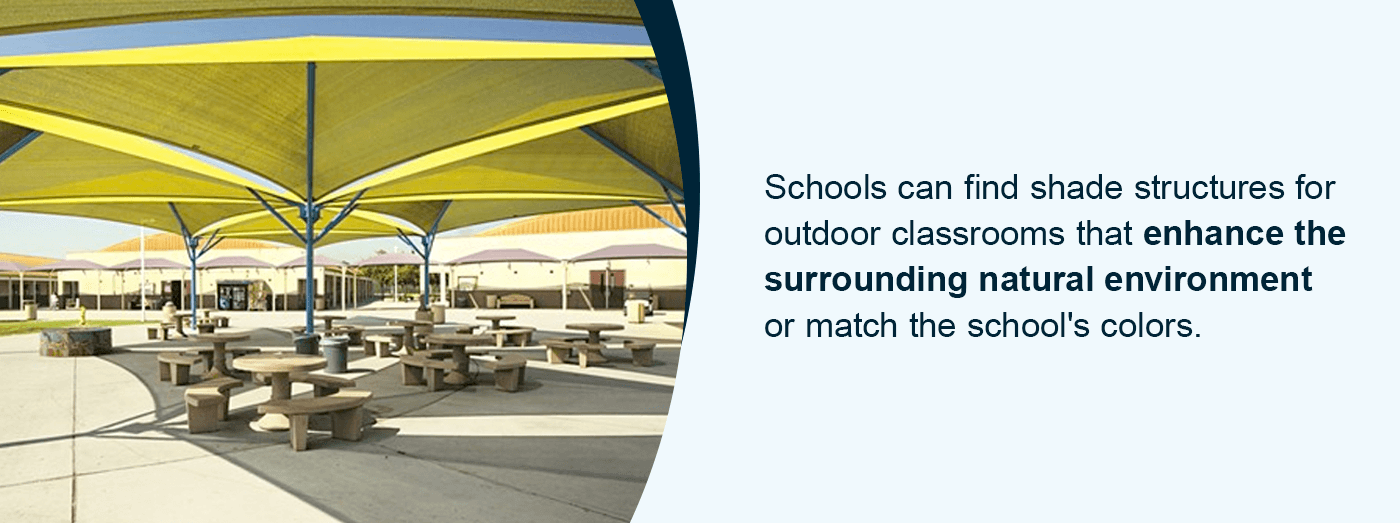

Get Your Outdoor Classroom Shade Today
If you’re looking for a shade solution for your outdoor classroom, USA SHADE offers numerous options to suit your project needs. Our durable shade structures made from HDPE protect students and educators from the heat and make your outdoor space functional and aesthetically pleasing. Along with high-quality products, our team provides exceptional support for an easy process from design to installation.
To see how we’ve already helped many different schools find the best shade solutions for their needs, take a look at our featured projects. Then get in touch with us to start toward developing your own outdoor classroom area today.